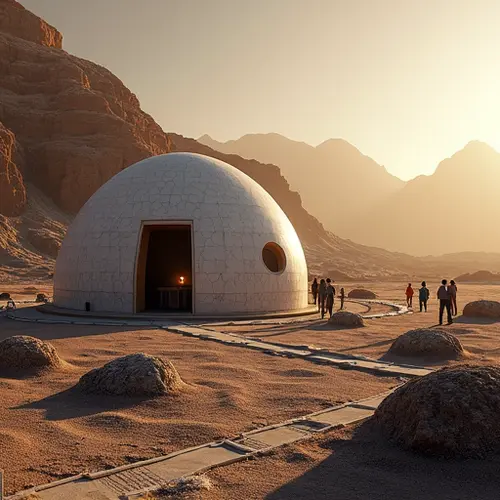
From Sci-Fi to Reality: The Moon as Our Next Home
For decades, the idea of living on the Moon was confined to science fiction. But in 2025, architectural plans for self-sustaining lunar cities are moving from the drawing board to reality. With NASA's Artemis program and the Chinese-led International Lunar Research Station (ILRS) both aiming for permanent settlements, humanity is on the cusp of becoming a multi-planetary species.
The Architecture of Survival
Building on the Moon presents unique challenges: extreme temperatures ranging from -178°C to 127°C, cosmic radiation, and month-long nights. Recent designs feature hybrid structures combining solid elements with inflatable components that deploy automatically. These habitats use lunar regolith (soil) as 3D-printed building blocks and radiation shielding. NASA's 2025 Moon to Mars Architecture workshop emphasizes using local materials to minimize Earth dependence.
Powering the Lunar Night
Engineers are focusing on polar "peaks of eternal light" where sunlight is nearly constant. Solar arrays combined with compact nuclear reactors will provide uninterrupted power. A proposed grid could link habitats across Shackleton Crater, where NASA plans its Artemis Base Camp by 2028.
Life in a Closed Loop
Self-sufficiency requires revolutionary life-support systems. Water will be extracted from ice deposits, while hydroponic farms using processed regolith could feed 100 people per half-hectare. The European Space Agency is developing closed-loop systems that recycle 98% of water and oxygen.
Challenges Ahead
Lunar soil lacks essential volatile elements like nitrogen and hydrogen. Transport costs remain astronomical - $1 million per kilogram from Earth. Long-term health impacts of low gravity are still unknown, though artificial gravity concepts using rotating sections show promise.
Stepping Stone to the Stars
These lunar cities aren't just about the Moon. As Dr. Sarah Johnson of MIT explains: "The technologies we're developing - from radiation shielding to closed ecosystems - are testbeds for Mars colonization. The Moon is our cosmic backyard where we'll learn to thrive beyond Earth." With prototypes scheduled for testing by 2027, humanity's first off-world cities could welcome residents before 2035.

 Nederlands
Nederlands
 English
English
 Deutsch
Deutsch
 Français
Français
 Español
Español
 Português
Português


